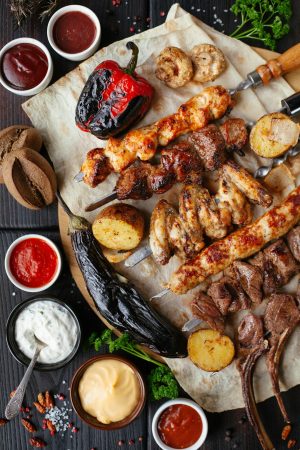Selecting between baby back and spare ribs for a BBQ pork ribs recipe depends on desired texture and cooking time. Baby back ribs, leaner with minimal bone, cook quicker and are easier to eat. Spare ribs, richer in fat and connective tissue, become tender and juicy after slow-cooking, offering intense flavor. Both cuts provide accessible, affordable, mouthwatering BBQ experiences catering to diverse preferences.
“Unleash your inner BBQ master with our simple guide to crafting restaurant-style pork ribs at home! Discover the secrets behind perfectly cooked, tender ribs that will have you and your family craving more. We’ll explore the best rib cuts like baby back or spareribs, share an easy marinade recipe packed with flavor, and provide tips for slow cooking or grilling to achieve juicy, mouthwatering results. Elevate your BBQ game with these expert techniques and create a mouthwatering BBQ pork ribs recipe that’s sure to impress.”
- Choosing the Right Cut for BBQ Pork Ribs
- – Understanding different rib cuts
- – Benefits of using baby back ribs or spareribs
Choosing the Right Cut for BBQ Pork Ribs
When it comes to crafting the perfect BBQ pork ribs, selecting the ideal cut is a crucial first step. Opting for baby back ribs or spare ribs is a popular choice among rib enthusiasts. Baby back ribs, as the name suggests, are located near the baby back of the pig and are known for their meaty sections and minimal bone structure, making them easier to eat and cook evenly.
Spare ribs, on the other hand, offer a heartier experience with more bone and connective tissue, which can result in tender, juicy meat when slow-cooked. For a simple BBQ pork ribs recipe, baby back ribs are often preferred due to their versatility and relatively quick cooking time. This cut allows for a balance of tender meat and flavorful sauce penetration, ensuring a mouthwatering culinary delight.
– Understanding different rib cuts
When it comes to BBQ pork ribs recipes, understanding different rib cuts is key to achieving that perfect, tender, and flavorful result. The two most common types are baby back and spare ribs. Baby back ribs, as the name suggests, come from the pig’s lower back, close to the baby back bone. They have less fat and a tighter, smaller cut, making them easier to cook evenly. This cut is ideal for those who prefer a leaner option without sacrificing taste.
Spare ribs, on the other hand, are taken from the belly of the pig and connected to the spine. Rich in flavor due to the marbling of fat, they offer a heartier, juicier experience. However, their larger cut means they require more attention during cooking to ensure even tenderness across each section. Knowing these cuts allows BBQ enthusiasts to choose the perfect ribs for their recipe, whether it’s a slow-cooked, mouthwatering bbq pork ribs dish or another culinary creation.
– Benefits of using baby back ribs or spareribs
When it comes to BBQ pork ribs recipes, both baby back ribs and spareribs offer unique advantages that cater to different preferences. These cuts are popular choices for a reason—they’re incredibly flavorful and easy to work with. Baby back ribs, as the name suggests, come from the top of the ribcage and have less bone and fat than their spare rib counterparts, making them tender and easier to eat without the need for excessive chewing. This makes them ideal for those who prefer a quicker, more relaxed BBQ experience without sacrificing taste.
On the other hand, spareribs, with their meaty portions connected by a thin layer of fat, deliver intense flavor and tend to stay juicy even when slow-cooked. They’re perfect for adding that signature smoky, rib-stickiness to your BBQ pork ribs recipe. Regardless of which cut you choose, both baby back ribs and spareribs are accessible, affordable, and offer an unparalleled BBQ experience—a true delight for any food enthusiast.
